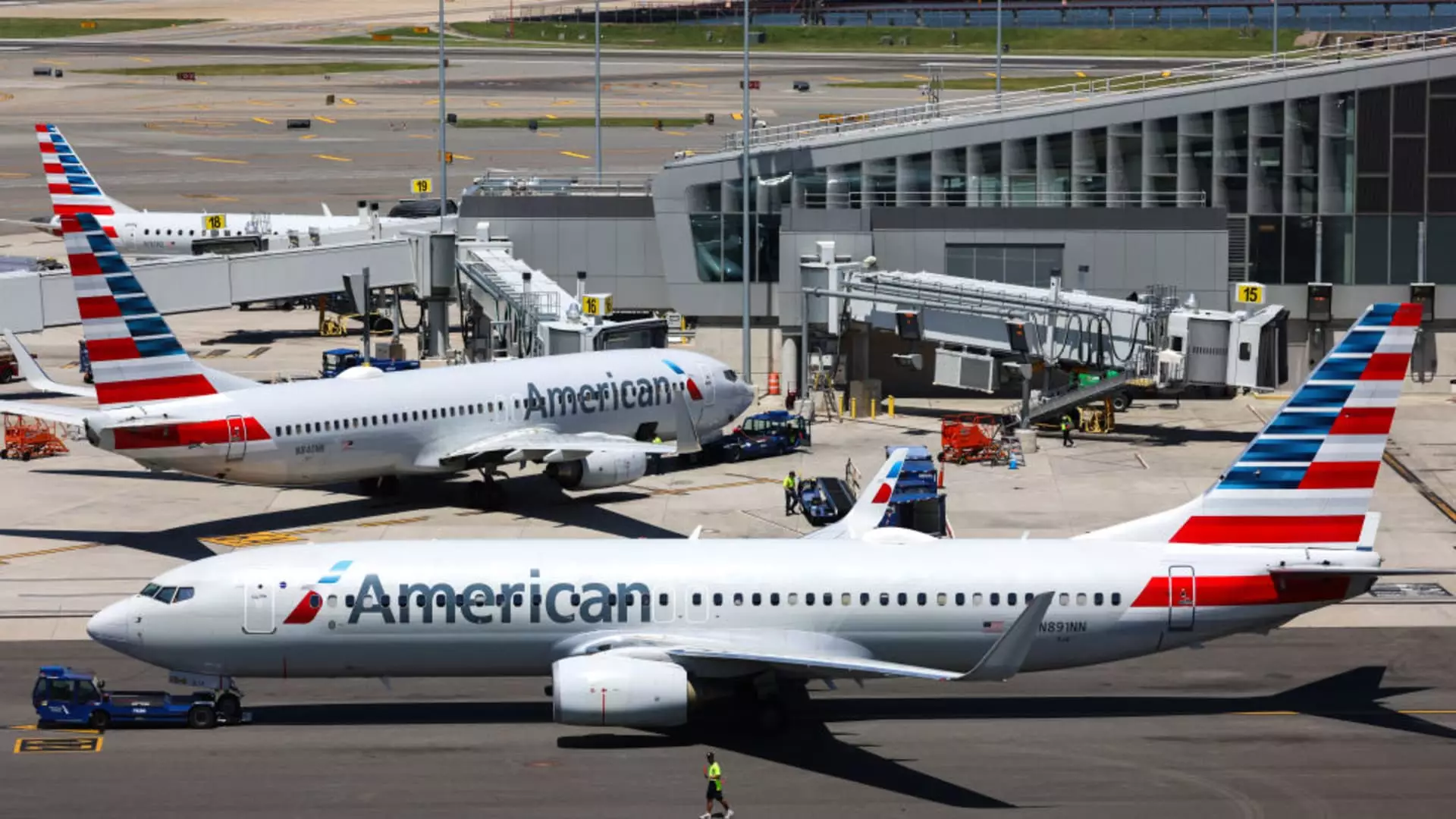In the competitive landscape of co-branded credit card partnerships, American Airlines stands at a pivotal juncture. The carrier is reportedly in negotiations to designate Citigroup as its exclusive credit card partner, signaling the potential end of its long-standing relationship with Barclays. This shift, if finalized, could have significant implications not only for both financial institutions involved but also for the airline’s operations and customer engagement strategies.
The Rationale Behind the Partnership Shift
American Airlines’ move to consolidate its credit card business with Citigroup is driven primarily by the desire to enhance revenue from its loyalty program. Over recent months, the airline has been engaging in negotiations with various banking institutions and card networks to create a comprehensive long-term agreement. The rationale behind this strategy appears to stem from a well-recognized industry trend: organizations are seeking to consolidate their partnerships to streamline operations and improve financial outcomes.
Loyalty programs are critical revenue drivers for airlines, and American Airlines is no exception. These programs not only reward customer loyalty but also generate billions of dollars from banks in return for the miles customers earn when they use credit cards. During the turbulence of the pandemic, when travel demand plummeted, these partnerships proved vital as consumers continued to earn and spend using their credit cards, thus maintaining the flow of revenue into the airline’s coffers.
The Competitive Landscape of Co-branded Card Deals
The stakes in co-branded credit card negotiations are high, as banks vie for exclusive partnerships with well-known brands like American Airlines. These arrangements offer banks access to a loyal customer base that routinely spends significant amounts each year, creating a lucrative marketing opportunity. However, the intricacies of profit-sharing and the structure of these deals can significantly influence the bottom line for either party.
As companies like American Airlines push for better terms—requesting larger shares of interest and fees—banks face their own challenges. The current financial landscape, marked by rising card losses and increased regulatory scrutiny, has prompted some banks to rethink their involvement in co-branded partnerships. This shifting dynamic highlights the importance of ensuring that these agreements remain beneficial for both airlines and financial institutions.
Historically, American Airlines has navigated its co-branded credit partnerships through a dual-issuer model. In 2013, following its merger with US Airways, American retained Citigroup while also partnering with Barclays. This unusual arrangement has persisted, allowing both banks to cater to different segments of the travel market. Citigroup’s track record in terms of more profitable customer bases compared to Barclays has certainly positioned it favorably in ongoing negotiations.
The recent discussions also reflect how partnerships evolve based on market conditions and consumer behavior. Airlines like American are increasingly recognizing the critical role credit card programs play in sustaining financial health, especially as passenger revenue growth has been overshadowed by rising card spending.
The Potential Impact of Regulatory Scrutiny
Despite the potential advantages for American Airlines in solidifying its ties with Citigroup, the deal remains contingent on securing the necessary regulatory approvals. Regulatory bodies, including the U.S. Department of Transportation, may pose challenges that could delay or even derail the contract. Given the complexities of such partnerships within the financial sector, there’s a real possibility that the status quo—American’s current partnership with both Citigroup and Barclays—may linger if negotiations falter.
As Citigroup navigates these negotiations, the bank is evidently seeking to bolster its position and financial performance within the co-branded credit market. Led by CEO Jane Fraser, Citigroup has expressed its intent to enhance partnerships to drive greater value for customers. If a deal with American Airlines is reached, it could result in a significantly longer contract, potentially spanning seven to ten years. Such a timeline would grant Citigroup ample opportunity to recover costs associated with transitioning Barclays customers and investing in the partnership.
Moreover, as the airline industry continues to evolve, attracting new and retaining current customers will remain paramount. Engagement through innovative co-branded credit offerings will be pivotal in differentiating Citi’s products in a saturated market.
As American Airlines navigates its path forward in collaboration with Citi, the implications of these decisions will resonate throughout the financial and airline sectors. Ultimately, the outcome of these negotiations will reflect broader trends in consumer behavior, regulatory climates, and the strategic imperatives of both financial institutions and airlines in an increasingly competitive marketplace. This example underscores the necessity for adaptive strategies that leverage partnerships to create shared value for all stakeholders involved.

